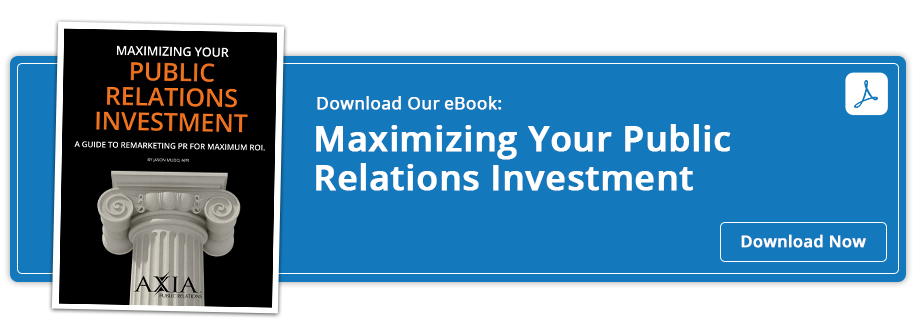Educate your team on listenership opportunities with podcasts.
 Since their launch in the 2000s, podcasts have continued to grow in popularity. Podcasts allow consumers to digest information through listening, whether it’s current events, history, mystery, how things are made, self-help, and more. Podcasts are a great tool for gaining new or additional knowledge on any topic.
Since their launch in the 2000s, podcasts have continued to grow in popularity. Podcasts allow consumers to digest information through listening, whether it’s current events, history, mystery, how things are made, self-help, and more. Podcasts are a great tool for gaining new or additional knowledge on any topic.
Unlike TV, podcasts allow listeners to consume content for free and at various listening speeds. Many consumers enjoy listening to podcasts during car rides, workouts, or as background noise during work.
Typically, podcast producers will seek out guests with expertise in the topic at hand — guests PR professionals like us can secure. Because of this, there needs to be a way to assign or determine the audience of a podcast, as listenership is crucial to its success. This is where Listen Notes come in.
Audio: Listen to this article.
Listen Notes
The Listen Notes website has reviewed more than 3 million podcasts, effectively determining the popularity of a show by comparing it to other “really simple syndication”-based podcasts and providing a score ranging from 0 to 100.
The higher the score, the more popular the podcast. Podcasts ranked from 90-100 in the Listen Score fall into the Tier 1, or top-tier, media outlet category. For some clients, these podcasts may be where they want to focus their public or media relations outreach to have their company’s experts and executives featured. Listen Notes typically updates a Listen Score every 30 days, but it’s possible a podcast’s Listen Score isn’t updated monthly.
Example Listen Scores
The Listen Score is not strictly tied to how many "listens" a podcast has. For example, 10 million listens from a bot are not as valuable as 1,000 listens from human beings. Additionally, a podcast’s Listen Score should be considered “good” if the podcast is ranked higher than or comparable to similar podcasts.
Some of the top podcasts in the U.S. include these shows, with their Listen Score and Global Ranking as a percentage:
- This American Life: LS 89 and FR top 0.01%
- Stuff You Should Know: LS 89 and GR top 0.01%
- Freakonomics Radio: LS 83 and GR top 0.01%
- How I Built This with Guy Raz: LS 83 and GR top 0.01%
- The Science of Social Media: LS 51 and GR top 0.05%
- On Top of PR with Jason Mudd: LS 32 and GR top 5%
- The Business of Marketing: LS 23 and GR top 10%
What’s a Really Simple Syndication?
Really Simple Syndication is a real-time feed of data that computers can read – for podcasts, the RSS feed is a list of the podcast’s latest episodes. Utilizing RSS feeds for your podcast is a way listeners can find your podcast and start listening.
In fact, many of the most popular podcast apps work by finding and importing the RSS feed from the podcast producers – a podcast’s RSS feed includes a title, a short description, sometimes artwork like the podcast cover image, the podcast category, the language the podcast is in, and an explicit rating.
Podcasts are a great way to create a personal connection with listeners who are your potential customers. Learning more and educating your company’s team about the opportunities podcasts have to offer is necessary if it’s an avenue your company wants to pursue.
If your brand wants to create memories consumers hold onto and want to share, we can get you there faster than ever. Ask us how we can help.
 Clients love Marjorie’s work ethic, speed and diligence. She has worked with Axia Public Relations since October 2011. Marjorie graduated from Rockhurst University with a Bachelor of Arts in communication and loves to cheer for her hometown Kansas City Royals. Learn more about Marjorie.
Clients love Marjorie’s work ethic, speed and diligence. She has worked with Axia Public Relations since October 2011. Marjorie graduated from Rockhurst University with a Bachelor of Arts in communication and loves to cheer for her hometown Kansas City Royals. Learn more about Marjorie.
Photo by Sides Imagery
Topics: podcasting


Comment on This Article